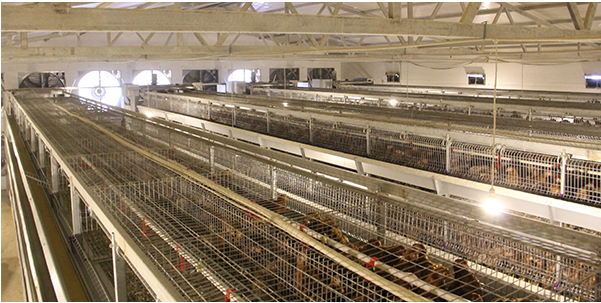Drinking water management for chicks in pullet chicken cages
- font size
- Be the first to comment!
The newborn chick is very fragile. There are still proteins in its body that are not fully absorbed. Only when the chicks have effective drinking water can they accelerate the absorption of the yolk material and enable the chicks to digest and absorb better. In addition, chicken cage manufacturers have found that the temperature in the brooding house is higher, and the water of the chickens needs to be supplemented by drinking water. Therefore, breeding chicks should drink water first and then forage.
Letting the chicks drink for the first time is habitually called "open drinking". A few hours before the chicks arrive, the water should be put into the drinking fountain so that the water temperature and the house temperature are close to 16-20°. The drinking fountain can be a tower drinking fountain or a sink, or even a simple drinking fountain. The number of drinking fountains should be sufficient, to ensure that each chick has at least 1.5 cm of drinking place, or every 100 chicks have 2 tower drinking fountains with 4.5 liters of water. The drinking fountain or sink should be as close as possible to the light source, insulation umbrella, etc. Its height is adjusted with the growth of the chicks, so that the edge of the drinking fountain is about 2 cm higher than the back of the chicken.
In order to disinfect drinking water, clean the gastrointestinal tract, and promote the excretion of meconium of chicks, in the first few days of drinking water, about 0.01% potassium permanganate can usually be added. For chicks that have been transported over long distances, about 5% of glucose or sucrose can be added to the drinking water to increase energy and help restore physical strength. You can also add 0.1% vitamin C to the drinking water for the chicks to drink.

During the brooding period, keep drinking water all day long. If you want to replace the small drinker with a large drinker, you should put the large drinker down in advance, and leave the small drinker in place for 2-3 days, so that the chicks will gradually become familiar with drinking water on the large drinker before removing the small drinker. Drinking fountain. Drinking fountains should be cleaned once a day.
The water supply system in the automatic pullet chicken cages should be checked frequently and the dirt should be removed, because the water storage tank and pipes are prone to bacteria and must be treated frequently and disinfected with drugs such as potassium permanganate. For small and medium-sized chicken farms and chicken farmers, they should try to drink tap water or clean well water, avoid drinking river water, so as to prevent pollution from water sources and contract diseases.
The above are the precautions and detailed operations shared by chicken cage manufacturers at the beginning of drinking for chicks. Drinking water for poultry is very important, farmers should pay attention to the management of drinking water for chicks.

